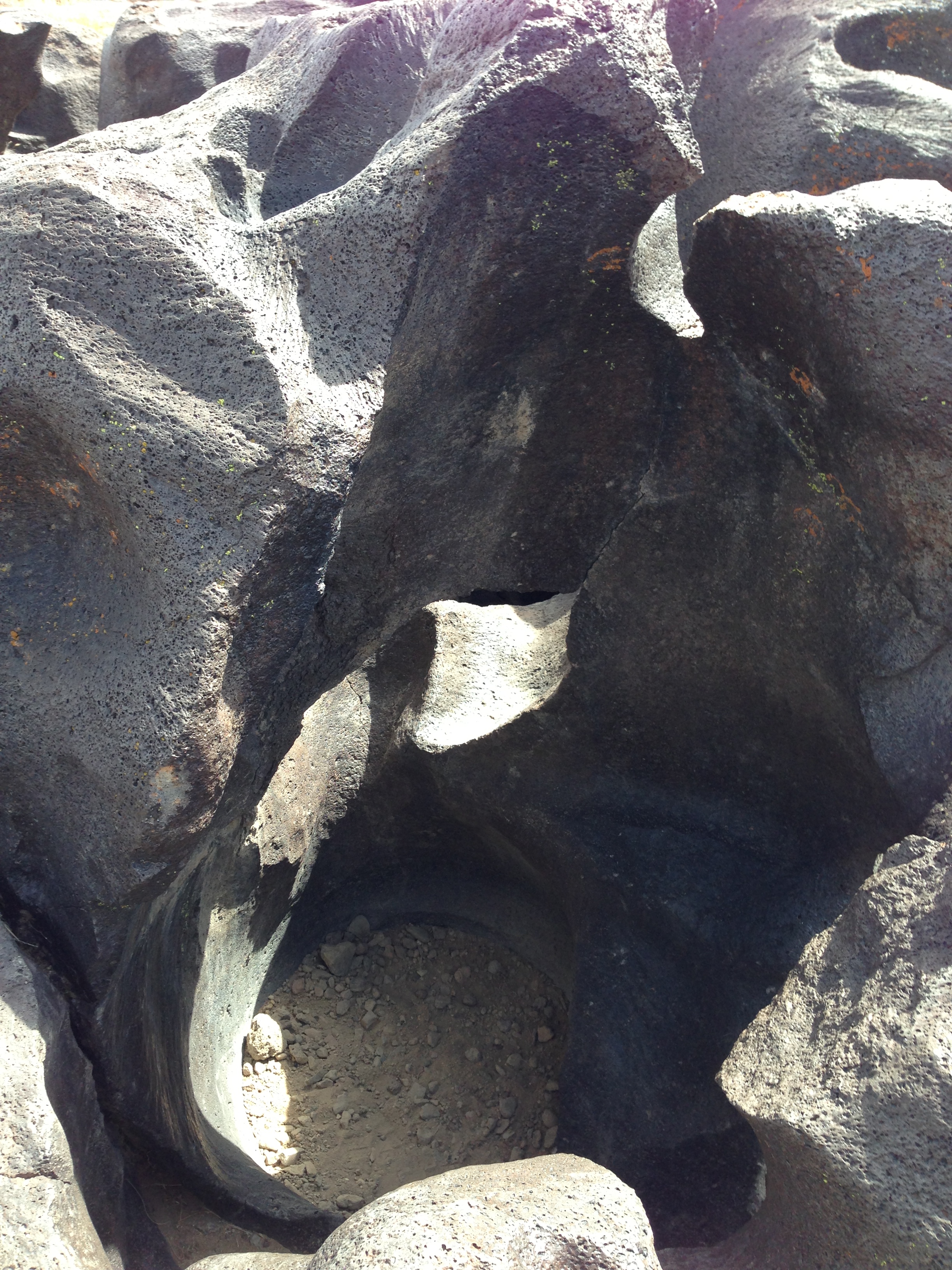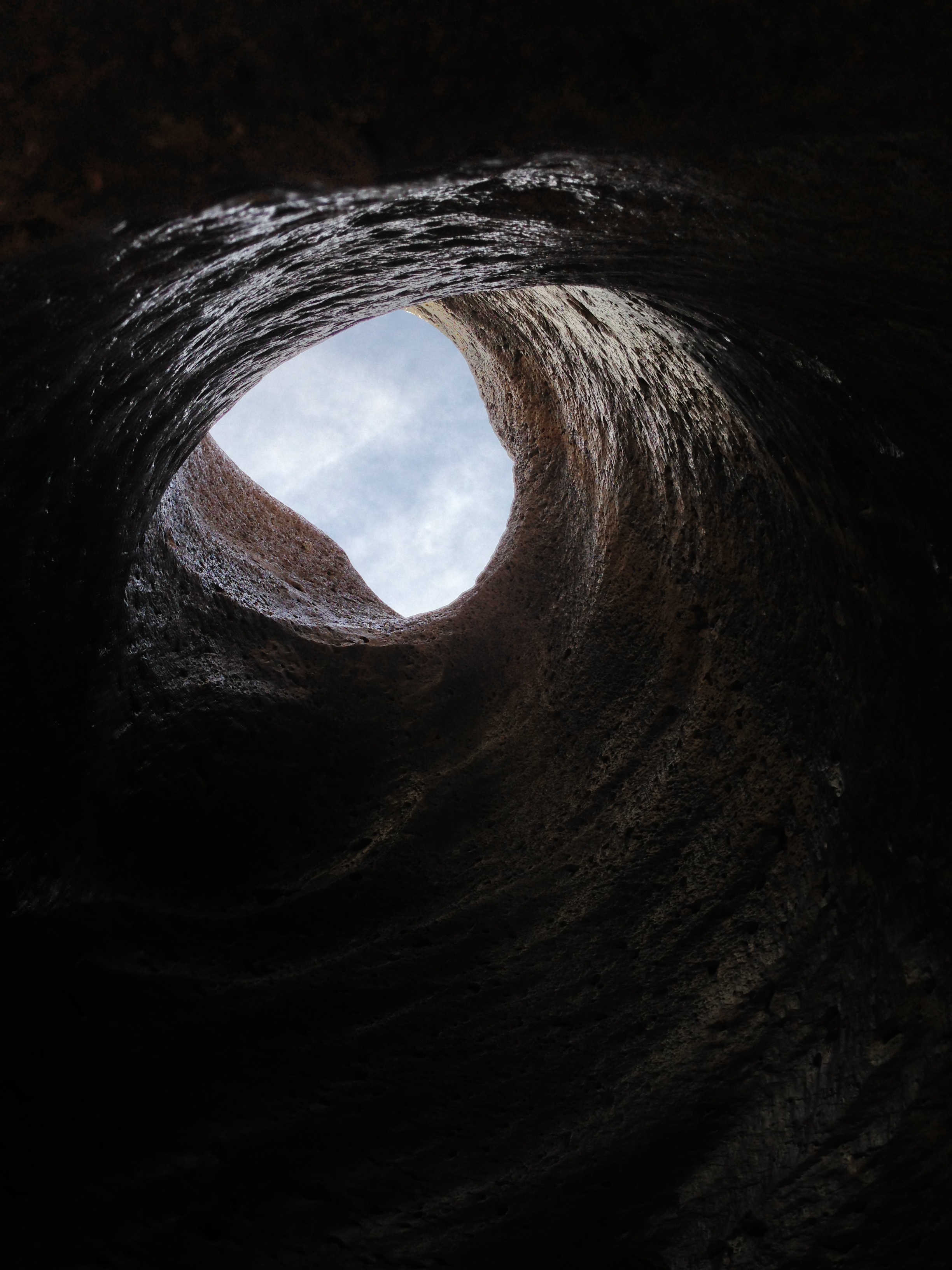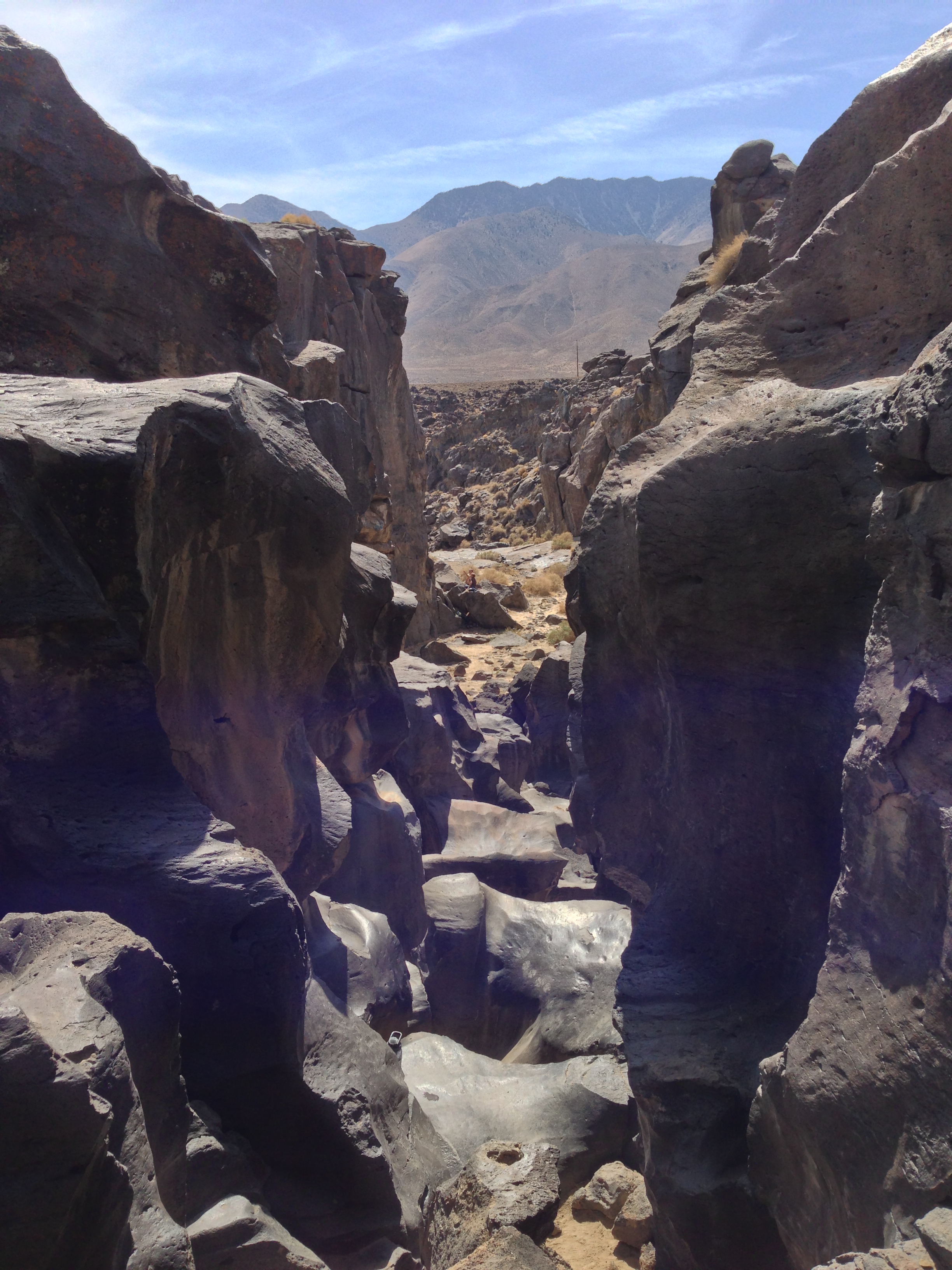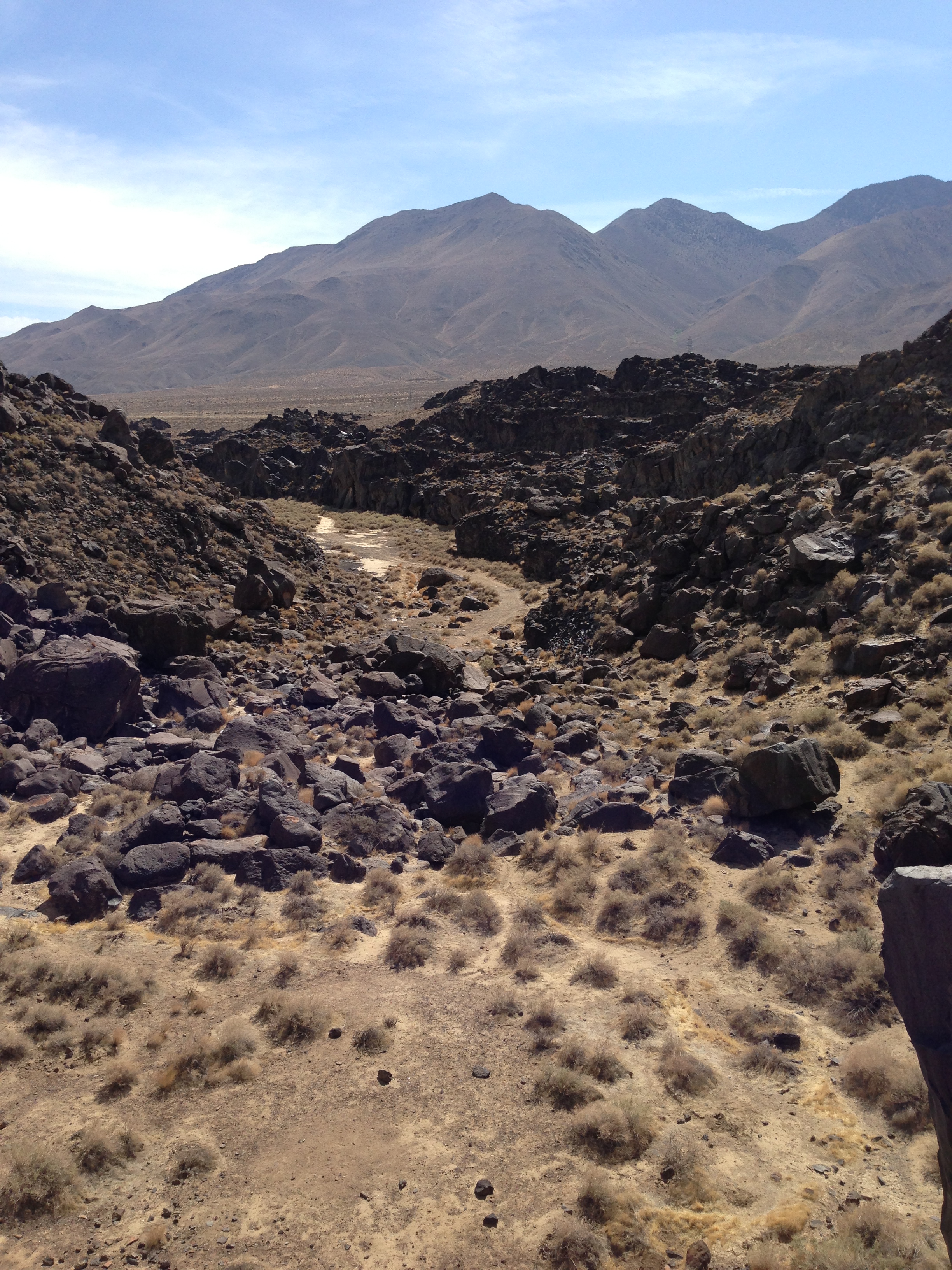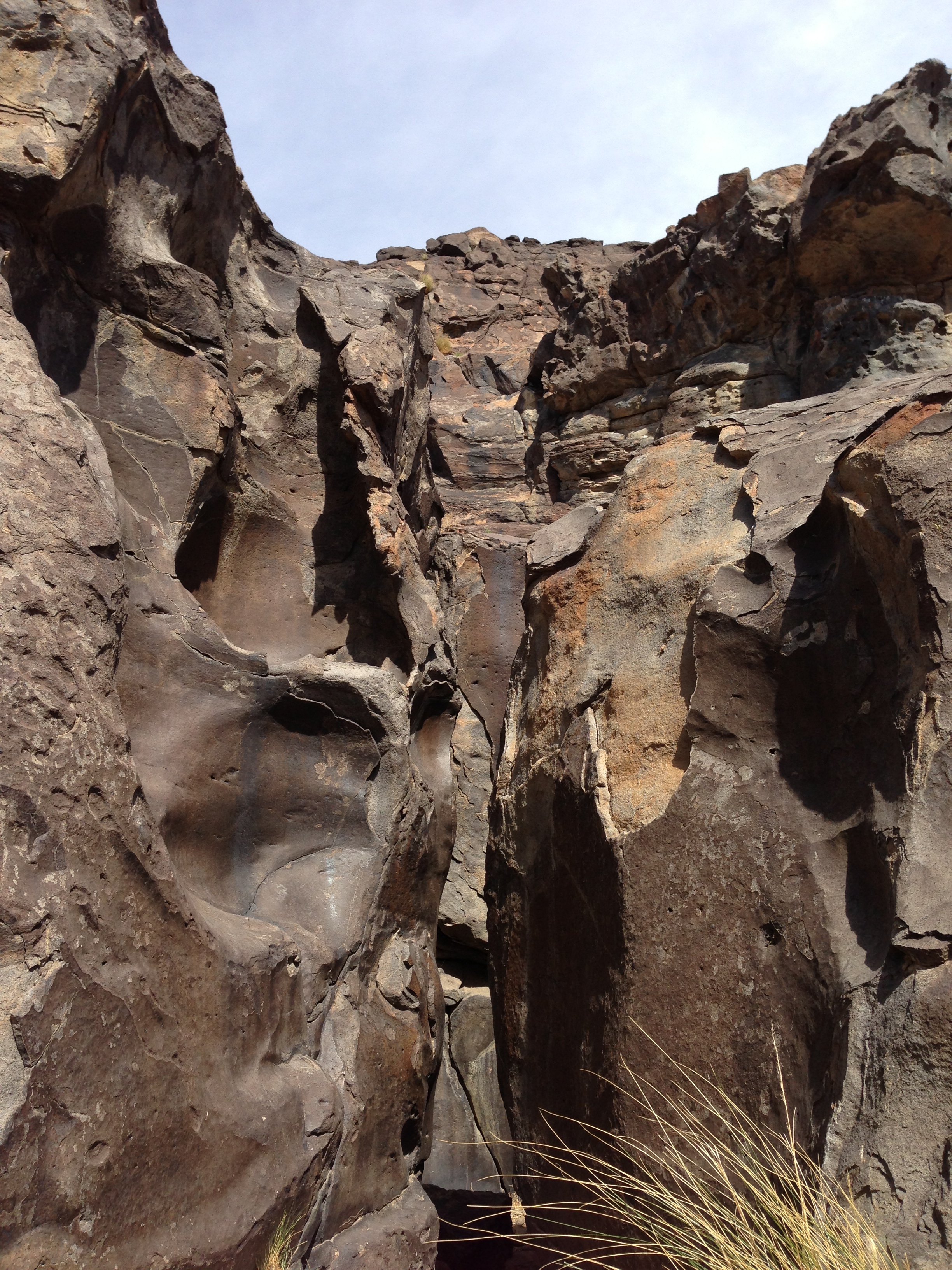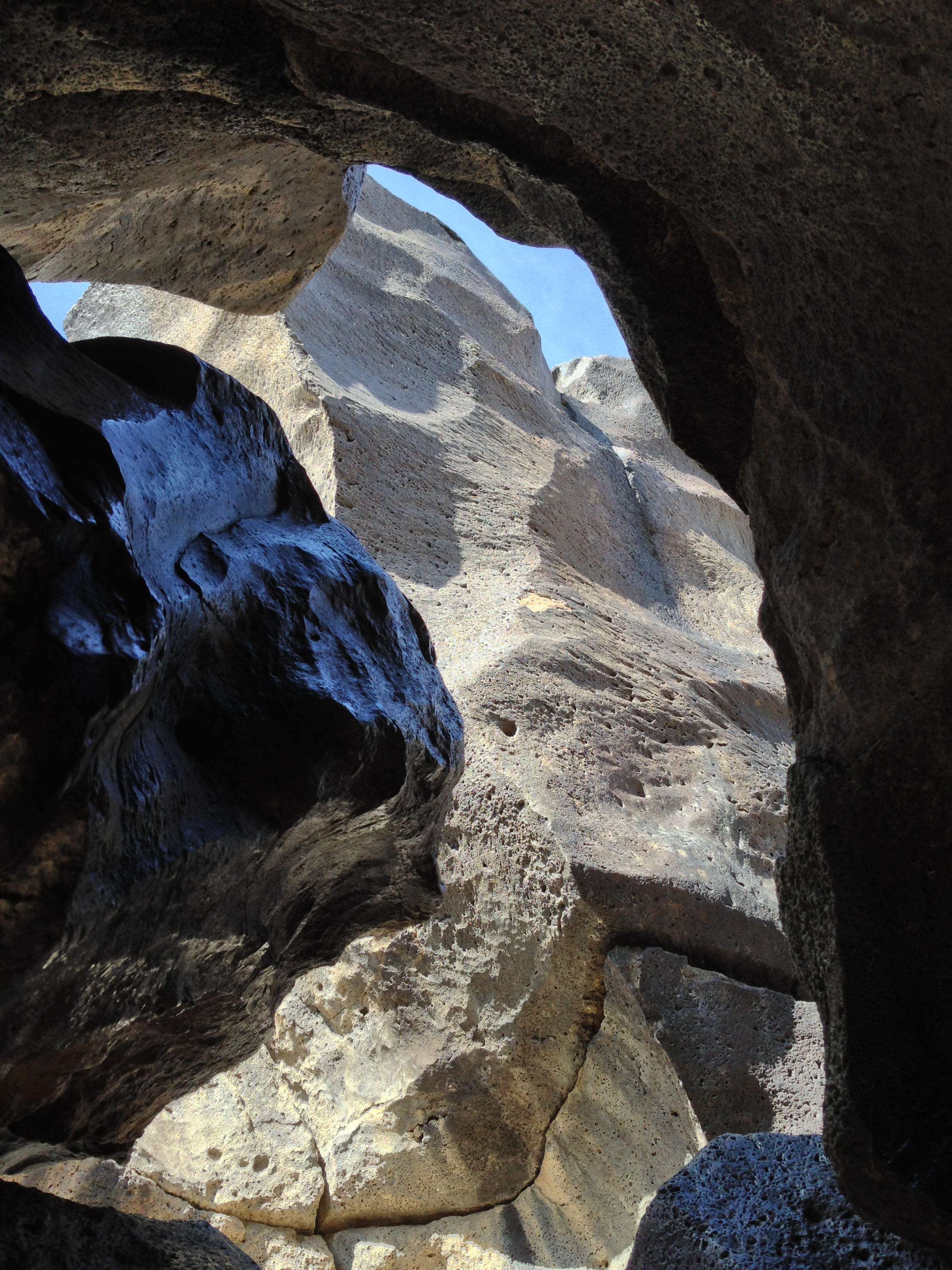The volcanic scenery around Fossil Falls, including Red Hill
There’s stretches of country in the United States that are off the map. While I don’t mean they’re off the map literally, as they’re present on every map, they’re off the map in terms of public knowledge. In my opinion, the largest of these black spots in public consciousness stretches anywhere East of the I-395 from Lone Pine down South. For the most part, this is land that time has abandoned and the world has moved on from. I am talking about an area that was covered with glacial lakes eons ago, had abundant wildlife frequenting it, and bore absolutely no resemble to the blasted and sculpted desert that remains today. Today, this area is good for three things: 1) adventure, imagination, and exploration; 2) studying geology; 3) and for demonstrating that everything has its time. Make no mistake about it, there is mystery in this land, in long lost fossil pools of water in and outside of Death Valley; history in abandoned ruins and long lost places; and beauty in this land in rock formations - the Trona Pinnacles; the Alabama Hills; and today’s area, Fossil Falls. The point about all of this is that even though this area is considered a wasteland, what it really is a place of adventure, and an opportunity to see things that are mostly lost to the public consciousness of the world.
What is Fossil Falls: It is an area with unique geologic features. The area was part of the Coso Volcanic Range, which was an active volcanic area thousands of years ago. Some of the remnants of this volcanic activity can be seen in the form of a cinder cone, Red Hill, which is next to Fossil Falls. The other remnants of this volcanic activity are the “falls” themselves, which is a large area of basalt (hardened lava). This large sheet of basalt blocked portions of ancient Owens River, and probably portions of the Owens Lake. The significance of this is that during the last ice age, water from receding glaciers (and the river and lake) flowed over this basalt, smoothing it, eroding it, and forming the canyons and holes that remain today over a period of thousands of years. Today, what remains is smooth basalt that has eroded into a distinctive geologic area. (For more information click here and here).
Where is Fossil Falls: Fossil Falls is located directly off of the I-395. If you’re looking to visit, the BLM provides some great directions here.
The LA’s Guide to Fossil Falls: Fact: I totally blew it about discovering Fossil Falls. I had plenty of opportunites to check it out, especially as I’ve driven by it innumerable times on my way to Mt. Whitney, but I never did. It was only when I read my friend Josh’s blog post about it, did I realize that I needed to check it out. When I was headed up to Whitney this last April with my girlfriend, I knew that the time was right to visit. As described above, the location is super easy to find, and it is a short walk from the parking area to the actual “falls” (.20 miles). My first thought when I saw the falls was that not only had I blown it in not visiting sooner, I had really blown it. The geologic features there are mind-boggling to see; and it’s also amazing to feel the strange and smooth texture of the eroded basalt.
If you know me, you know that I don’t just stop and stare and touch a few things in an area, I explore the area, and explore I did. From where the trail ends, you can downclimb into what I would call the “falls canyon”. In this area, there are innumerable caves and holes, and it is a fairly spectacular area to examine and explore. As the majority of the basalt in this area is quite smooth, you do have to be careful as to where you are ascending and descending, and you also have to keep an eye on your surroundings.
The canyon stretches out for quite a distance, and eventually, I found myself in a spot where I would have needed a rope to descend further, which, unfortunately, I did not have. It is worth noting at this point that the area appears to be quite popular for climbing, as I did see a couple people working on their technique with some top ropes. I spent a fair amount of time in the canyon looking for petroglyphs, but either I missed them, or I was not far enough down in the canyon. But, if you are on the I-395, I’d highly suggest stopping by to see the remnants of the past!


